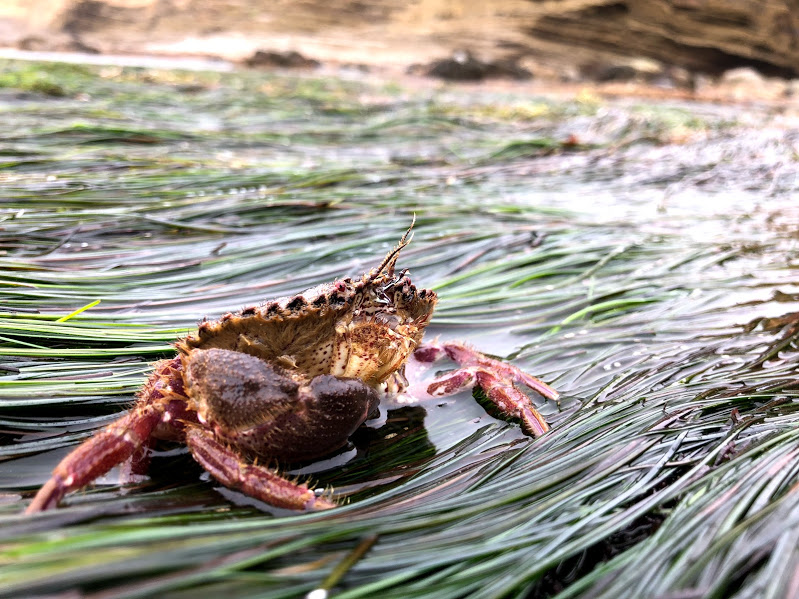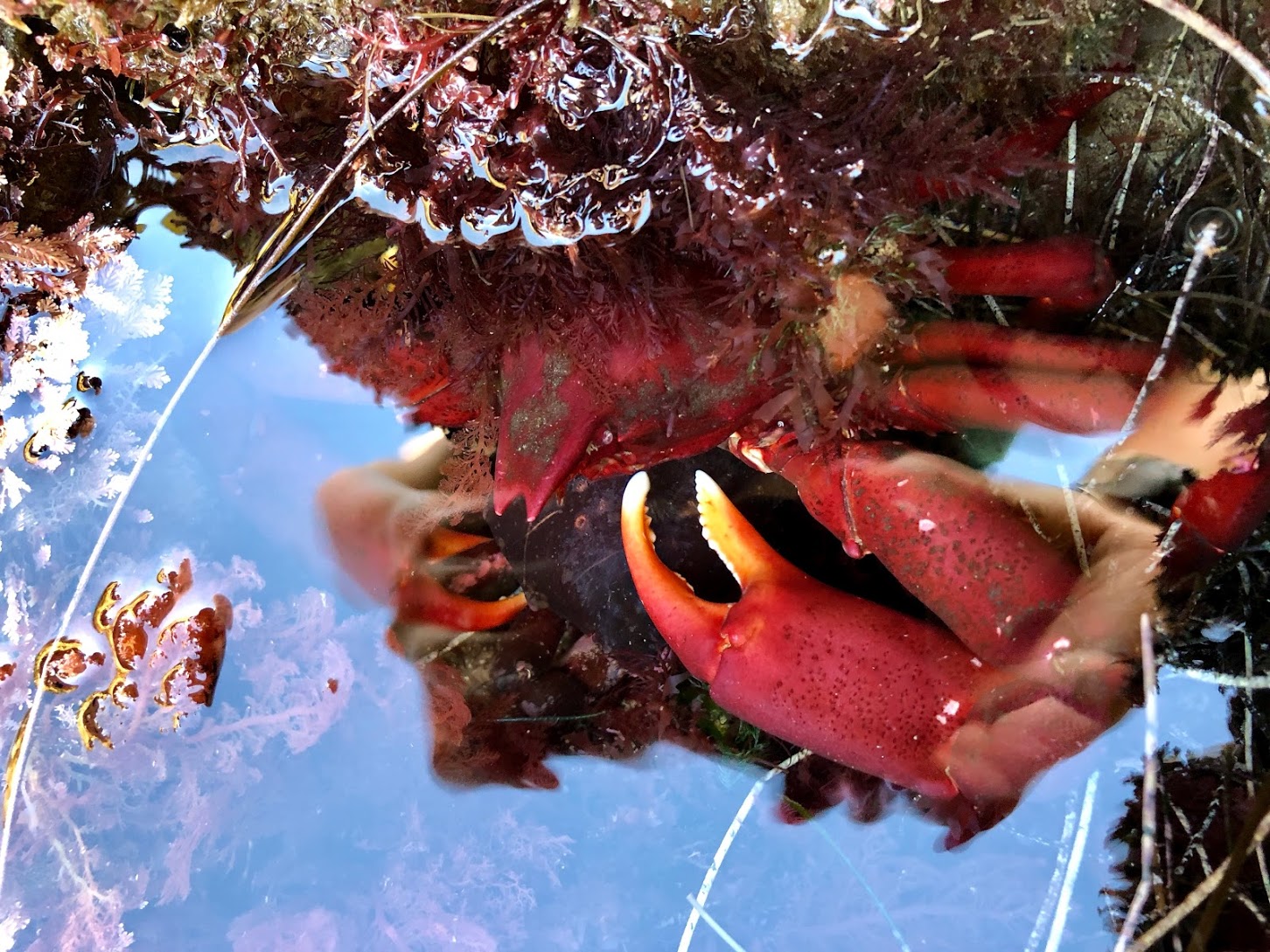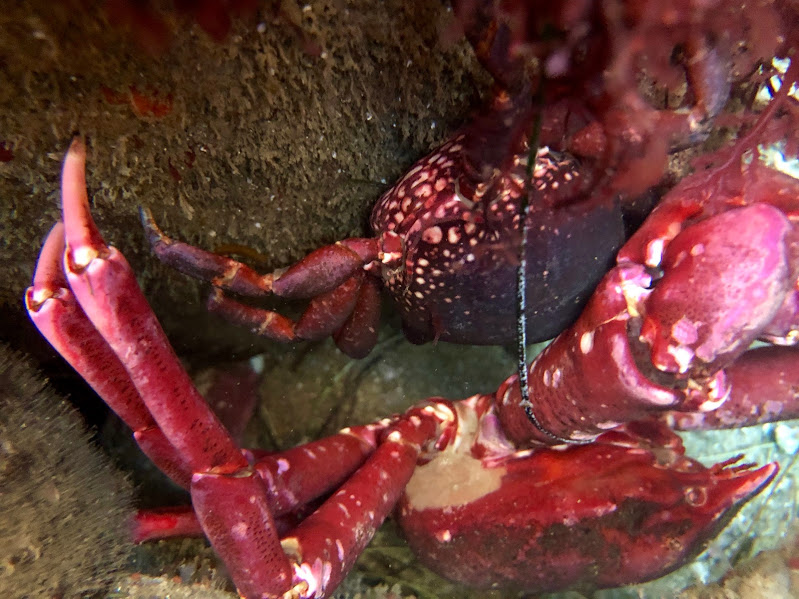
NPS Photo/Nicole Ornelas - Small rock crab scuttling along on the seagrass
The Common Rock Crab is found on both sandy and rocky substrate, but the rocky substrate seems to be preferred habitat of this crab. The Common Rock Crab ranges from the rocky intertidal to depths of 100 meters or more. Within this range, the Common Rock crab feed on carrion while scavenging, but are also predators. They will feed on a variety of snails, bivalves, and hermit crabs. They laboriously break apart the shell a piece at a time with their claws to expose the hidden quarry.
However, this crab can be not only predator but prey as well. Animals that prey on the Common Rock crab are octopus, some shark species, rockfishes, sea bass and sand bass. They are most vulnerable after they have molted their hard exoskeleton and their shells are soft, thus providing little protection against predation.

NPS Photo/Nicole Ornelas - Globose Kelp Crab hiding under a rocky outcrop.
The Globose Kelp Crab is mainly a subtidal crustacean, but can be found amongst the rocks of the intertidal zone after being swept there by currents or after a period of high surf. This species is identified by its large size, with a body-width of up to 4 inches (10cm) and an overall diameter of more than 1 foot (30cm). They also have a distinct feature at the front of their body for protection during conflict. This forward-pointing projection, called a rostrum, has a small triangular indentation at its tip. The claws are typically very large and the long legs are also very prominent. The coloration of the Globose Kelp Crab varies from a dark reddish brown to purple.

NPS Photo/Nicole Ornelas - A male (larger) and female (smaller) set of Globose Kelp Crabs hiding away in a rocky alcove.
This crab also displays the characteristics of sexual dimorphism, meaning the size of each sex is quite different. The Females are about half the size of the males noted above. This species is an herbivore and feeds on large kelps such as Giant Kelp (Macrocyctis pyrifera) and Feather Boa Kelp (Egregia menziesii).
Come visit on the next low tide and see if you can spot either of these crusty critters!
